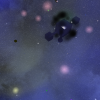Blogs
UltraEnglish
Impressions of Ultra
Last jump in car driving (no ultra)
UltraEngine Utilities
Ultra Engine SDK Now Available
Voxel Terrain Part 2 - Voxelization Methods
AI-Generated Game Textures and Concept Art
Tightening up the graphics and tripling down on glTF
Ultra Engine Client App
Exporting a glTF model from 3ds Max
Ultra Engine Compatibility with Leadwerks Game Engine
Voxel Terrain Part 1 - Voxelization
Where Input Has A Name
Cyclone Open For Mods
Buggy desert crawler
Returning
Structura postmortem

aiaf in postmortem

 SCP
SCP



